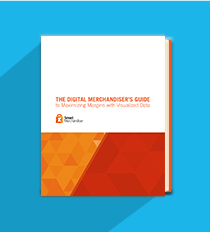
Although more consumers are shopping online than ever before, the digital sphere is still evolving. Some merchandisers don’t fully comprehend the powers of the internet. While many claim to understand the dynamics of digital sales, there are more opinions being voiced than there are facts being shared.
That said, there are a few commonly accepted myths about online retailing that can be busted based on proven digital merchandising practices.
Social Media is for the kids.
The idea that social media doesn’t matter is completely incorrect; social media is a requirement for any online retailer. It’s no longer a gray area where potential only exists with the right campaign. It's a way to communicate with your fans, grow a following, and guide a conversation centered on your brand. The effect Twitter, Facebook, Pinterest, Instagram and other channels can have on a brand is undeniably large.
In fact, users even create social media pages for companies who refuse to jump on the bandwagon. These pages can get out of control and become nightmares. Take a peek at the United Airlines spoof twitter feed for an example.
But social media doesn’t need to be a disaster. Use social media to engage customers and encourage them to participate. Offering your customers a sense of community is a great way to resolve customer issues and build loyalty.
From a merchandising perspective, regularly monitor brand sentiment and product mentions. Highlighting items on your home and product pages that are popular on social feeds is a sure way to increase sales and customer conversions.
Scheduled management works just fine.
It's 4:00AM, you’re fast asleep, but dozens of items are going out of stock in your store. Customers still see these items when they search, some customers even order them. When you arrive at work, you get to spend your morning sending out-of-stock emails and canceling orders.
With today’s technology, this scenario should never happen. Setting-up and maintaining a real-time inventory system is a must for today’s customers. Quickly and easily minimizing low-inventory items and removing out-of-stock products from your site is imperative for today’s online merchandisers. Customers are more likely to be annoyed by an out-of-stock item than by rude service.
Customers don’t care about payment options
Apple Pay, PayPal, various credit cards -- today’s business world has more ways to send and receive money than ever before. Consumers, however, typically have a single preference for checkout.
According to Computer World, consumers are insistent on only using one method. Not offering their preferred method can cost you sales. For an ecommerce merchandiser, this is an easy fix: opt for management software that supports multiple payments, currencies and transactions.
Building a global reach is a huge undertaking
There are thousands of languages in more than 190 countries and many have consumers looking to purchase your product. Marketing your products to a single country is a mistake. International shoppers prefer to browse in their native language and currency.
Ecommerce merchandisers believe translating their web pages into these languages is a large undertaking. It doesn’t have to be. With the right software and tools, multilingual marketing can be seamless. With minimal effort, your site can be presented in multiple languages and marketed directly to an international audience.
Real-time management is for the big companies.
The days of 8:00AM to 5:00PM internet management are gone. While you might feel overwhelmed by maintaining a website and responding to customers continuously, consumers expect websites to function 24/7 with readily available customer support. Working with commerce software that keeps your site up-to-date and running smoothly while you sleep is a crucial step to becoming an effective eCommerce merchandiser.
Don't believe everything you hear. But believe this: digital retail is growing quickly, and if you manage your store strategically, you will reap rewards.
Improving profit margins is at the top of all eCommerce merchandiser’s to-do lists which is why we’ve created The Digital Merchandiser’s Guide to Maximizing Margins with Visualized Data eBook.
Download the eBook to learn more!


